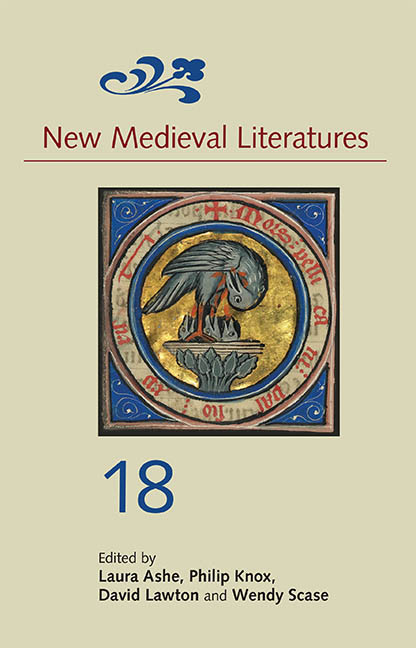Book contents
- Frontmatter
- Contents
- List of Illustrations
- List of Abbreviations
- 1 Arachnophobia and Early English Literature
- 2 Demonic Daydreams: Mind-Wandering and Mental Imagery in the Medieval Hagiography of St Dunstan
- 3 The Songs of Godric of Finchale: Vernacular Liturgy and Literary History
- 4 Sympathy for the Demon: Affective Instruction in the Katherine Group
- 5 Peynte it with Aves: Langland's Hawks, covetise, and Hugh of Fouilloy's Aviarium
- 6 Similes We Cure By: The Poetics of Late Medieval Medical Texts
- 7 The Life of Job: Bible Translation, Poem or Play?
4 - Sympathy for the Demon: Affective Instruction in the Katherine Group
Published online by Cambridge University Press: 03 July 2019
- Frontmatter
- Contents
- List of Illustrations
- List of Abbreviations
- 1 Arachnophobia and Early English Literature
- 2 Demonic Daydreams: Mind-Wandering and Mental Imagery in the Medieval Hagiography of St Dunstan
- 3 The Songs of Godric of Finchale: Vernacular Liturgy and Literary History
- 4 Sympathy for the Demon: Affective Instruction in the Katherine Group
- 5 Peynte it with Aves: Langland's Hawks, covetise, and Hugh of Fouilloy's Aviarium
- 6 Similes We Cure By: The Poetics of Late Medieval Medical Texts
- 7 The Life of Job: Bible Translation, Poem or Play?
Summary
In the early thirteenth-century Middle English life of St Juliana of Nicomedia, the author structures his didactic message around the figure of a demon. By making the demon – not the saint – the affective entry point in Seinte Iuliene, the author manipulates established tropes in hagiography, creating an emotionally ambivalent yet communally unifying experience for the reader. The demon evokes a complex affective interaction with the audience: sympathy for his confession and status as a slave of Satan, disgust for his evil deeds, and pleasure in his resulting punishment. The demon functions as a performative model of emotional response. The author discourages long-term affective identification with the demon, who is an ‘affect alien’ (Sara Ahmed's term), pushing readers to move through sympathy for the demon to the normative position of disgust for evil. While my focus is Seinte Iuliene, I also explore a demon's emotional performance and sacramental instructions in the life of St Margaret of Antioch (Seinte Margarete). In the context of the confessional instructions given by the associated Ancrene Wisse (a rule for anchorites), I describe the sacramental education the Katherine Group lives provide through the demons’ speeches.
While offering an emotional dialogue for the individual reader, the Katherine Group also defines the Christian community's boundaries through affective prompts. In his study of medieval drama, John D. Cox describes evil figures’ society-shaping role: ‘the devil's opposition defined community by default, illustrating emblematically what community was not by opposing it’. In the Katherine Group, emotions and demons work in concert to probe the boundaries of the Christian community, both lay and religious. Vital to the work's instructive function, Belial's final comical humiliation in Seinte Iuliene guides the reader to an orthodox affective distance from the demon. Before creating this distance through comedic exclusion, Belial's violent punishment invites the audience to experience a tangled confluence of sympathy, disgust and pleasure. In the final section, artistic portrayals of saints Margaret and Juliana help us probe the interplay between slapstick violence, comedy and sympathy in the saints’ lives.
- Type
- Chapter
- Information
- New Medieval Literatures 18 , pp. 105 - 130Publisher: Boydell & BrewerPrint publication year: 2018
- 1
- Cited by

